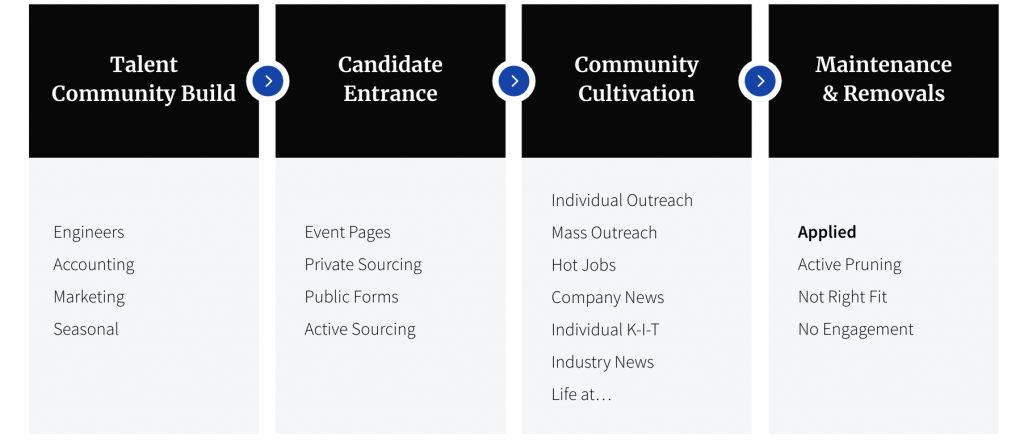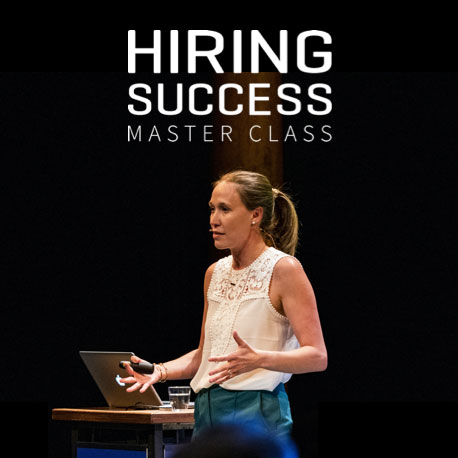One of the hallmarks of successful businesses is the relentless pursuit of improvement. The same can be said of successful talent acquisition teams. These organizations consistently evaluate their capabilities and chart a course towards Hiring Success. One particularly useful framework for this journey is the Hiring Success Maturity Model.
Table of Contents
- Analysis of the 3 pillars
- What’s assessed in each pillar’s capabilities
- How it’s scored
- Interpreting your results and taking action
- Hiring Success in action: Effective assessments
- Conclusion
The Hiring Success Maturity Model evaluates the sophistication of an organization’s capabilities across the three pillars of Hiring Success. It clearly identifies a TA function’s strengths, as well as areas for improvement. Consequently, talent acquisition teams that assess their capabilities across this rubric are able to clearly outline their current state and design a desired future state.

Analysis of the 3 pillars
As mentioned, the Hiring Success Maturity Model provides an analysis of a company’s TA function, within the context of the three pillars of Hiring Success:
- Talent Attraction & Engagement
- Collaboration & Selection
- Management & Operating Model
Each pillar is broken down into 6-7 capabilities, allowing for a thorough and granular assessment. For example, the pillar of Talent Attraction & Engagement is subdivided as outlined in the image below:

In total, the Hiring Success Maturity Model spans across 21 different areas of evaluation, allowing for an in-depth and holistic examination of the performance of TA teams. Additionally, the end analysis identifies whether or not there are critical improvements to be made.
For instance, if an organization needs to hire more knowledge workers, then they can identify specific capabilities under each pillar—such as job advertising or Brand & Experience under the Talent Attraction & Engagement —that will help attract these scarce, high-impact roles.
What’s assessed in each pillar’s capabilities
Within each capability under the pillars, the Hiring Success Maturity model analyzes the people, processes, and technology in place. For example, for evaluating Sourcing & CRM under the pillar of Talent Attraction & Engagement will examine the following topics:

How it’s scored
The Hiring Success Maturity Model ranks the sophistication and “maturity” of TA teams across four levels:

All 21 subcategories examined in the assessment are ranked on these levels—again with respect to people, process, and technology. See the image below for a more detailed example for Sourcing & CRM.

After each subcategory is ranked, a final overall score can be generated, as well as individual scores for each of the three pillars of Hiring Success and their subcategories .
Not only does this framework provide companies with a comprehensive analysis of their talent function’s current state, it’s also instrumental in taking the next steps towards Hiring Success.
Interpreting your results and taking action
Once you have reviewed where your organization lies along the Hiring Success Maturity Model, it is time to ideate potential solutions and recommendations to level up in each sub-category. The outcome will vary by business and team type, as well as goals. Building a plan that will help you reach your desired future state is a critical step.
Hiring Success in action: Effective assessments
To illustrate how the Hiring Success process works, let’s examine how a hypothetical company, Worldwide Automotive Group, used the results of the Hiring Success Business Assessment from SmartRecruiters to drive change. The images below show how they were scored both cumulatively and with respect to the pillar of Talent Attraction & Engagement.


As you can see, Worldwide Automotive Group’s assessment for Talent Attraction & Engagement indicates there’s room for substantial improvement in the following areas: Sourcing & CRM, Brand & Experience, and Global Mobility.
After evaluating where Worldwide Automotive Group stood on the Maturity Model, they were able to develop key progress indicator (KPI) metrics that would help them effect change and measure their progress. Below is an example of KPIs that were put into place for candidate relationship managmeent (CRM).
CRM KPIs
- Leads added (per week, month etc.)
- Lead conversion funnel (progress along path to applying)
- Source mix (of leads being added)
- Source mix of hires as it relates to CRM
- Campaign activity (clicks, conversions, engagement etc.)
- Number of campaigns (per week, per month etc.)
- Leads added vs. campaigns (quality vs. quantity)
- Average time prospect spends in community before applying or withdrawing from community
Here’s the target state process:

Here’s the future state framework:

The tactics listed above are thorough, actionable, and measurable—and that’s only taking into consideration one sub-category. After the results of all 21 subcategories are assessed and translated into strategy, the outcome is a thorough roadmap that TA teams can use to meticulously optimize their function, taking them one step closer to achieving Hiring Success.
Conclusion
Successful talent teams must first evaluate their current state and processes in order to strategize on how to achieve Hiring Success. The former is done through the Hiring Success Maturity Model, whereas the latter is done through an in-depth analysis of the results and workshopping with key stakeholders. Combined, they provide TA teams with a roadmap and compass that points in one direction only—towards Hiring Success.

 Enroll in the Master Class & earn 6 SHRM credits
Enroll in the Master Class & earn 6 SHRM credits